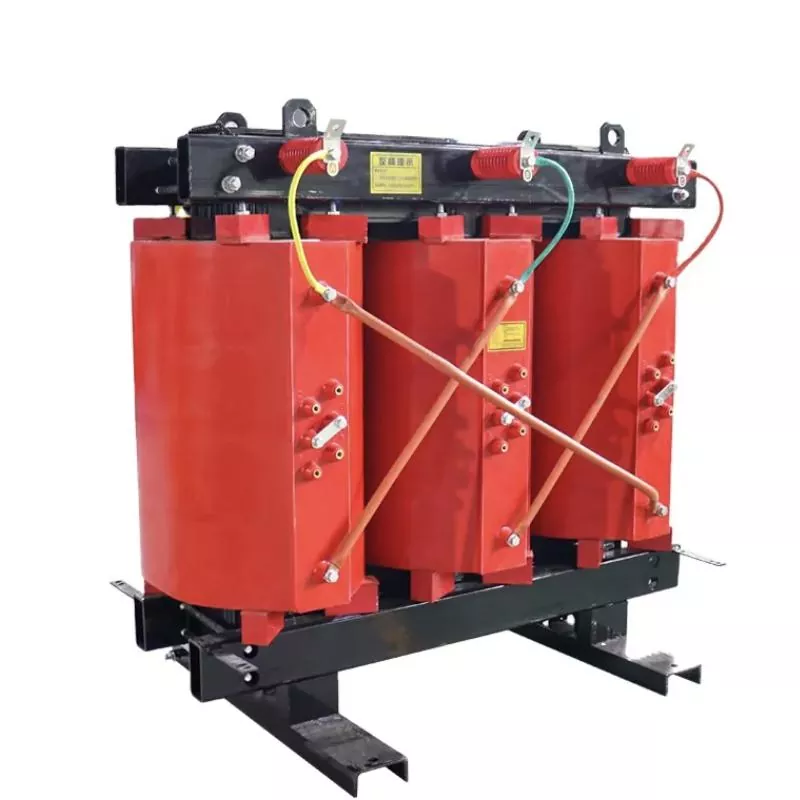How Does an Electrical Transformer Work?
2025-08-06
Introduction to Electrical Transformers
An electrical transformer is a static device that transfers electrical energy between circuits through electromagnetic induction, enabling efficient power distribution at different voltage levels. At TOONICE, we manufacture premium-quality electrical transformers that meet global standards for power transmission, industrial applications, and renewable energy systems.
This comprehensive guide covers:
✔ Working principle of electrical transformers
✔ Key components and construction
✔ TOONICE transformer product specifications
✔ Industry applications and selection criteria
✔ FAQ addressing common technical questions
How Does an Electrical Transformer Work?
Basic Operating Principle
An electrical transformer operates on Faraday's Law of Electromagnetic Induction:
-
AC current flows through the primary winding, creating a magnetic field
-
Ferromagnetic core channels the magnetic flux to the secondary winding
-
Voltage induction occurs in the secondary coil (step-up or step-down)
-
Power transfer happens without direct electrical connection
Transformer Equation
V₁/V₂ = N₁/N₂
Where:
-
V = Voltage
-
N = Number of winding turns
Key Components of an Electrical Transformer
| Component | Function | TOONICE Specifications |
|---|---|---|
| Core | Provides magnetic flux path | Cold-rolled grain-oriented silicon steel |
| Windings | Conduct current to create magnetic field | Oxygen-free copper (Class C) |
| Insulation | Prevents short circuits | Nomex/Kraft paper with epoxy resin |
| Cooling System | Dissipates heat | ONAN/ONAF/OFWF cooling methods |
| Tap Changer | Adjusts voltage ratio | Off-circuit/On-load (OLTC) options |
TOONICE Electrical Transformer Product Line
Technical Specifications Comparison
| Model | Type | Capacity Range | Voltage Class | Efficiency | Dimensions |
|---|---|---|---|---|---|
| TN-DT-500 | Dry-Type | 50-500kVA | 11kV/0.4kV | 98.5% | 1200×800×1400mm |
| TN-OT-2000 | Oil-Immersed | 500-2000kVA | 33kV/11kV | 99.2% | 2500×1800×2200mm |
| TN-RT-5000 | Rectifier | 1000-5000kVA | 35kV/0.69kV | 98.8% | 3000×2000×2400mm |
Performance Features
✔ ≤25dB noise level for urban installations
✔ ±2% voltage regulation precision
✔ Short-circuit withstand up to 25kA/3s
✔ Custom impedance values available
✔ Smart monitoring IoT compatibility
Electrical Transformer Applications
Power Transmission
-
Grid substations
-
Step-up/step-down stations
Industrial Use
-
Manufacturing plants
-
Mining operations
-
Railway electrification
Renewable Energy
-
Solar farm collectors
-
Wind turbine interfaces
Commercial Buildings
-
Hospital power systems
-
Data center backups
FAQ: How Does an Electrical Transformer Work?
Q: What factors determine transformer efficiency?
A: Key efficiency factors include:
-
Core material quality (low hysteresis loss)
-
Winding conductor type (copper vs aluminum)
-
Load ratio (peak efficiency at 50-75% load)
-
Cooling method (liquid vs air cooling)
-
Design standards (IEC 60076, DOE 2016)
TOONICE transformers achieve up to 99.5% efficiency through advanced amorphous metal cores and precision winding techniques.
Why Choose TOONICE Electrical Transformers?
✔ 30% lower losses than industry standards
✔ Modular designs for easy maintenance
✔ Corrosion-resistant coastal variants
✔ 5-year warranty on core components
✔ Global certifications (IEC, IEEE, ANSI)
Get Your Custom Transformer Solution
For technical specifications, pricing, or OEM inquiries, contact our engineering team:
📧 Email: [email protected]
📞 Tel: +86-13989779778
With 20+ years in transformer manufacturing, I personally guarantee our products deliver unmatched reliability and energy savings. Let's discuss how TOONICE can power your next project!
